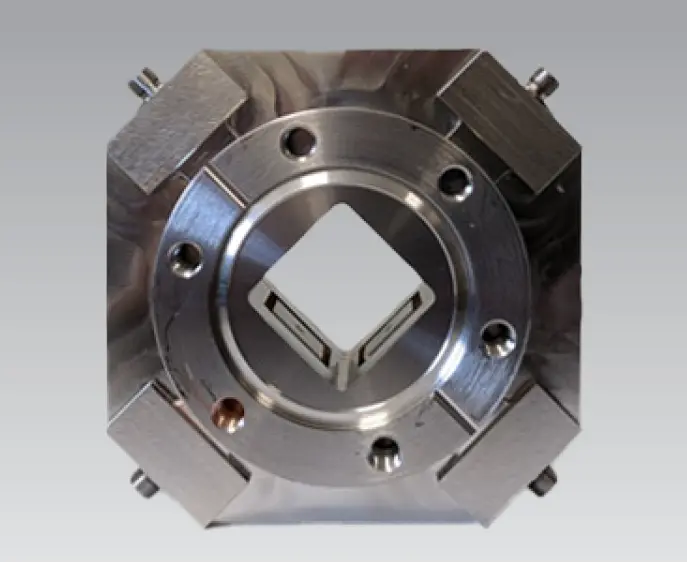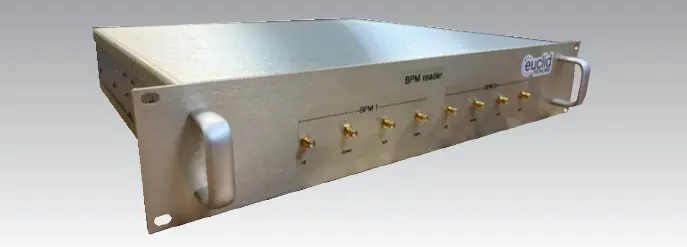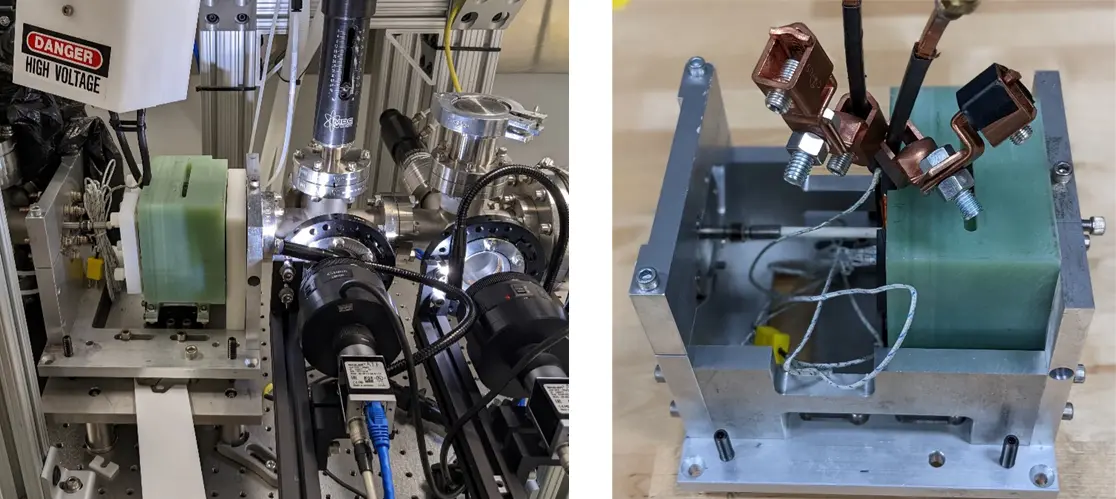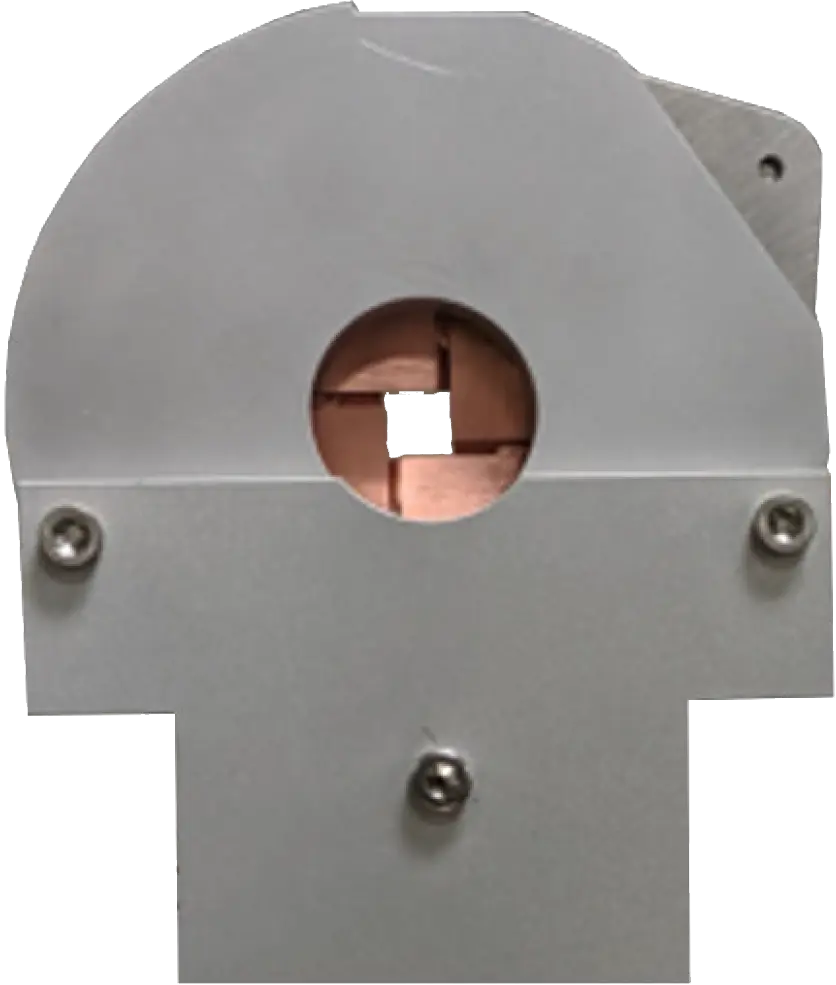Precision and energy-efficiency in compact designs
Euclid develops critical components to ensure electron beam density and temporal information of beamlines. Our intelligent, energy-efficient designs replace bulky technologies and optimize performance for next generation high power applications.
Compact beam position monitors with precision instrumentation
Euclid’s ultra-compact in-flange Beam Position Monitors (BPM) provide a high level of precision and performance at a low cost. They are budget-priced with these advanced features:
- High sensitivity
- Large dynamic range
- Full electronic readouts
- All ss construction
- UHV compatibility
- Customizable to different flange size and opening shape
Photos show a compact CFF design and controller.

BPM on a standard 2.75cf flange (top), BPM instrumentation box (bottom)


Euclid’s 2 Tesla flux concentrating (FC) pulsed magnetic lens tested at Brookhaven National Laboratory’s ultrafast electron diffraction beamline.
Ultra-compact pulsed solenoid lenses
Reduce weight and size by 100 times versus bulky DC solenoid lenses, with a major decrease in energy consumption. Our compact pulsed solenoid lens with flux concentrator can be synchronized to any beam with high stability (10e-5), providing up to 2 Tesla field strength in a small footprint.
This innovation enables our compact turnkey MeV UEM system to deliver “big beamline” performance in a unit that has a ~10x smaller footprint. (Read more about UEM application)
Other beam density and temporal information solutions
Euclid offers a wide range of compact, light-weight designs that replace bulky, old technologies. Other precision electronics/controllers include:
- Rugged beam halo monitor using diamond-based resonator
- Variable Aperture 2D beam halo monitors
- Cs heater
- Diamond detection assembly
- Flux concentrators
- Stable, rf and dc designs for high power applications

Euclid’s halo detector for high-energy beam (installed and tested at Duke University).

Beam halo monitor (left), CS heater (center), Diamond detector assembly (right).
